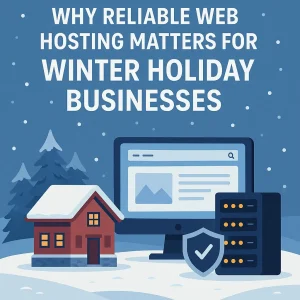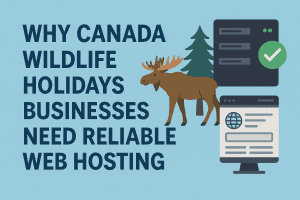Bandwidth is a term that’s bandied about fairly regularly in the digital world these days, and not surprisingly given how not enough of it can mean the ‘lag’ that nearly everyone has major difficulty tolerating. Truth is a lot of people that might be decrying a lack of it may not actually know what it is, and are more simply regurgitating what they’ve heard others says when voicing similar complaints.
Sufficient bandwidth is an absolute necessity for providing reliable web hosting, and here at 4GoodHosting we’re the same as every quality web hosting provider in Canada in that the success of our business depends on having it to the extent that it’s needed for websites hosted with 4GH. Nothing out of the ordinary there, but what is worth mentioning is that – in addition to having a basic understanding of web hosting bandwidth – there are measures that webmasters can implement themselves to increase available bandwidth.
All of that to come here in today’s blog entry, but first let’s have a basic look at what exactly web hosting bandwidth is and why you certainly can’t do without it
What is Web Hosting Bandwidth
Nearly all of you will be familiar with what it’s like to be driving in rush-hour traffic, or even observing it from a distance. We can think of bandwidth like the lanes of a highway and each vehicle represents the web traffic moving towards your site. Too many of them on those roads leads to long delays and frustrated drivers, while at the opposite end too many lanes mean excessive infrastructure costs for the city and a network that’s difficult and expensive to maintain on the taxpayer dime.
To the point, web hosting bandwidth is the amount of data that a website can deliver to its visitors over a certain period of time. We can conceptualize bandwidth as the capacity or diameter of any one or more of the ‘tubes’ of the internet – high bandwidths mean stronger, larger connections that can deliver more traffic and data, while low bandwidths mean more restricted connections or networks that often result in backlogs and slower loading speeds.
Web hosting providers (like us) typically describe the bandwidth associated with a certain hosting plan by relaying it as how much data can be delivered in a specific period of time, and most commonly in terms of gigabytes or terabytes per-month. As to be expected, you’ll pay more for extra bandwidth, but it’s also pretty much the norm that if you need it it’s not an added expense you can realistically avoid.
Unless backlogs and slower loading speeds aren’t going to be problematic for your visitors.. right then.
How Much Bandwidth Will Do?
This of course depends on the size, structure, and nature of your website. The reality is that bandwidth is a less adjustable component of web hosting, and so it’s important to find a web hosting plan in Canada with just the right amount of it as you certainly don’t want to be paying for a higher-priced hosting package that is more than you need.
It might be appropriate to say it’s better to err on the side of caution here and that too much is better than too little. While that’s probably true, there’s no reason why you shouldn’t or can’t find a package that gives you exactly the amount of bandwidth you need.
The Formula
We certainly didn’t create it, but we’re happy to share this simple formula for calculating how much bandwidth your site consumes; take these factors:
- Average number of visitors each day
- Average size of a page on your website, in kilobytes
- Average number of pages viewed by each visitor
- 31 days in a month
And multiply them all together.
That number will be the amount of bandwidth you can expect to approximately consume each month, in kilobytes (divide by 1,000,000 to calculate gigabytes). If your intention is to have people downloading files from your site, you’ll also want to multiply the average daily number of downloads and the average file size and add that number to your total.
It’s also a good idea to multiply your bandwidth estimate by roughly 1.5 to give yourself some flexibility with these projections.
Unlimited Bandwidth?
Not surprisingly, global internet traffic is reported to be increasing by roughly 22% each year. This growth is far outpacing the ability of telecommunications and internet service providers to supply the amounts of bandwidth required for many sites to retain their status quo when it comes to website performance. In response we’re seeing increased numbers of packages coming advertised as offering unlimited bandwidth.
That’s going to be misleading like that, as it’s not really unlimited. A better term here would be unmetered. Generally speaking, it’s only unlimited if every site hosted in that shared hosting arrangement is operating within their established bounds. We won’t go any longer, but just be wary of any such offer for unlimited bandwidth.
What Makes Bandwidth Important for a Website?
We can create an analogy here between bandwidth and a pair of shoes. Even Usain Bolt won’t be streaking down the track effectively if his cleats are several sizes too small. But in more literal performance terms, bandwidth is instrumental to your site’s speed and overall performance. You want it to be ‘firing on all cylinders’ as the expression goes, and having enough bandwidth is absolutely essential if your site is to be doing that.
First and foremost with all of this is page load speed. Web browsing individuals are impatient, so enough said about that. Insufficient bandwidth = poor page load speeds. Dynamic content needs more bandwidth too, and it’s a big part of why VPS hosting is increasingly popular these days
Is it Possible to Increase Bandwidth?
It is, and the primary way to do so is by conserving it. What we mean by this is reducing your site’s bandwidth usage. Here’s the most common ways of increasing available bandwidth for a website:
- Look for external sources or storage for images and videos (or optimize image files for web)
- Enable compression for HTTP, CSS, and JavaScript
- Implement caching and a content delivery network to store static content on servers closest to your audience
- Outsource RSS feeds to third-party applications or plugins
Alternately, you can – as mentioned – consider moving to a VPS hosting package.
Most well-made and well-situated websites backed by solid web hosting can expect to see 10% to 20% more traffic each month. Given this likelihood, even those of you are absolutely content with the amount of bandwidth available to you may find yourself needing more of it in the not too distant future.















